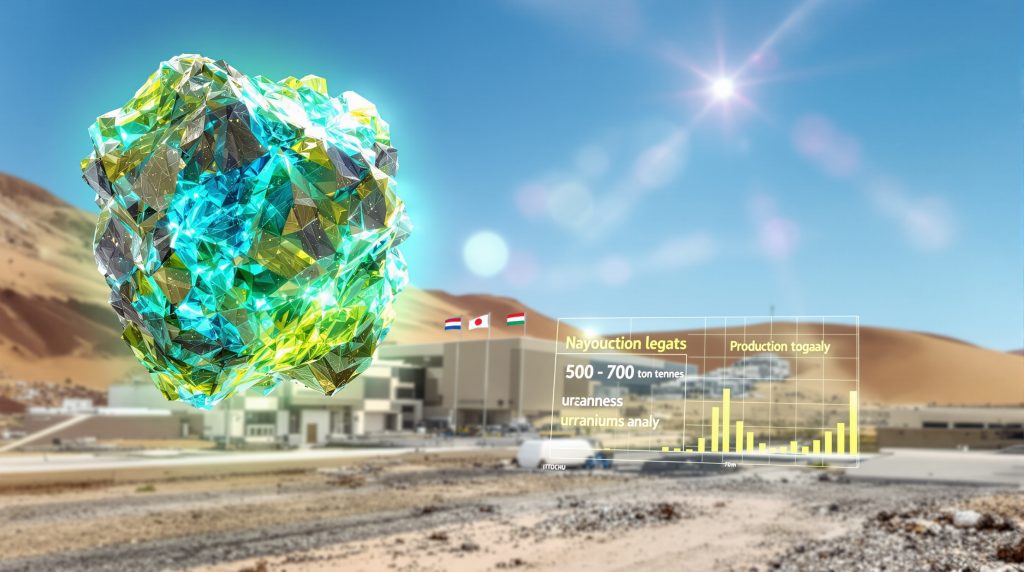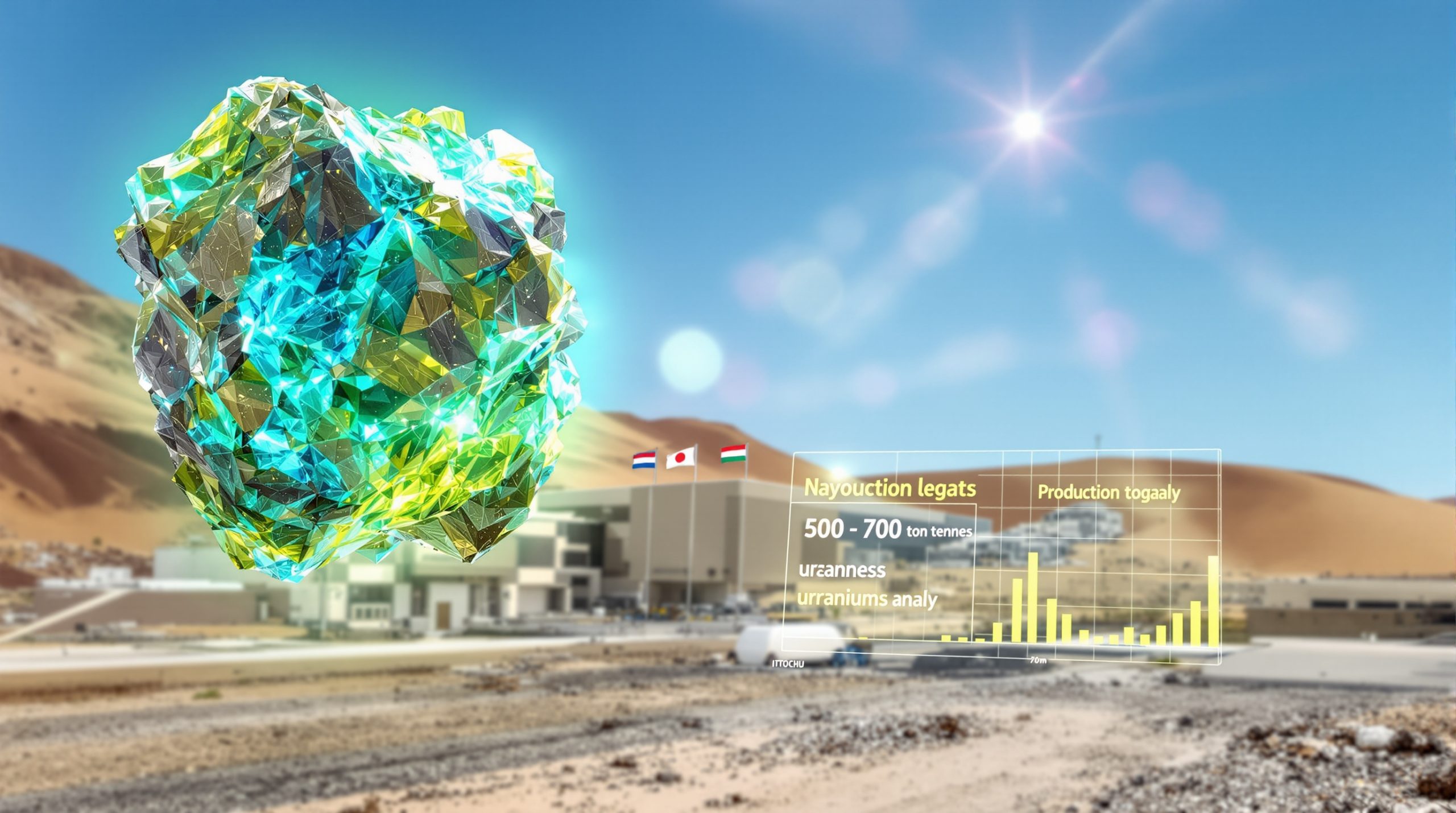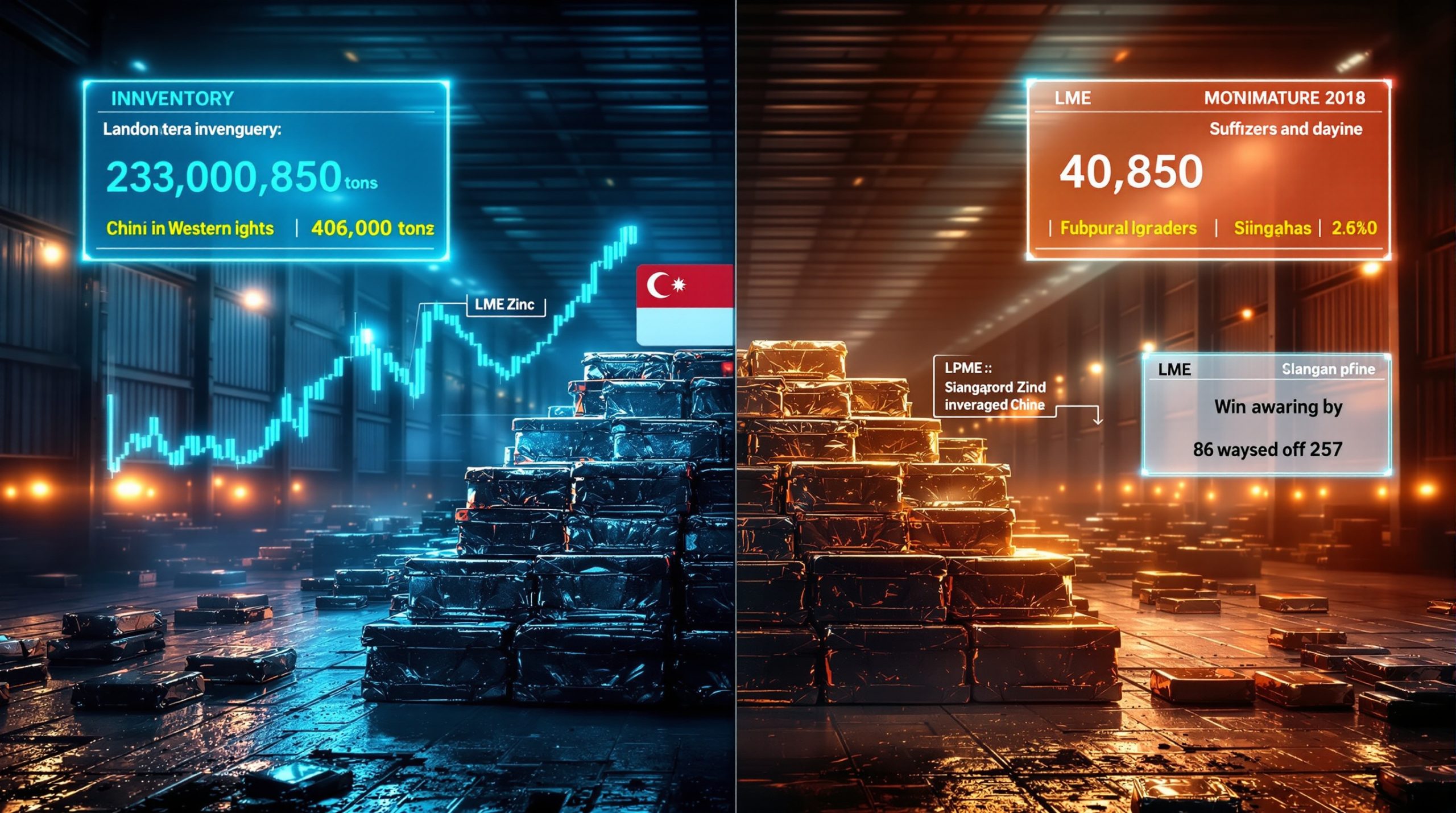South Djengeldi Uranium Project: Reshaping Uzbekistan's Mining Landscape
The South Djengeldi uranium project represents a significant milestone in Uzbekistan's natural resource development strategy, bringing together international expertise and local knowledge in a collaborative venture. This strategic project aims to strengthen Uzbekistan's position in global uranium markets while delivering economic benefits to the region. Through a carefully structured partnership and innovative operational approach, the project demonstrates how international collaboration can advance resource development in Central Asia amidst ongoing uranium market volatility.
How is the Nurlikum Mining Joint Venture Structured?
The Nurlikum Mining joint venture operates with a balanced ownership structure that brings together three key players from different regions. Following a restructuring completed in September 2025, the ownership distribution now stands at:
- Navoiyuran (Uzbekistan): 45% ownership stake
- Orano (France): 45% ownership stake
- ITOCHU Corporation (Japan): 10% ownership stake
This three-way partnership represents a strategic evolution from the exploration phase to industrial development. According to the companies' joint announcement, this restructuring "paves the way for the industrial development" of the uranium deposit, marking a significant milestone in the project's advancement.
Strategic Advantages of the Partnership
Each partner brings unique capabilities to the joint venture:
- Navoiyuran contributes local expertise, existing infrastructure, and operational capabilities as Uzbekistan's state uranium producer
- Orano provides advanced nuclear fuel cycle technology and global uranium market experience
- ITOCHU adds financial strength and international trade connections
The balanced structure between Uzbek and French interests (45% each) with Japanese investment support (10%) reflects a model increasingly seen in resource development projects that require both local knowledge and international expertise.
Operational Framework
Navoiyuran has been designated as the project operator, leveraging its established presence in the region. This operational arrangement allows the project to benefit from Navoiyuran's existing regional expertise while incorporating technological and process improvements from the international partners.
The partnership structure also enables risk sharing among the participants, distributing the capital requirements while allowing each partner to benefit from their proportional stake in the project's future production.
What Makes the South Djengeldi Project Economically Viable?
Integration with Existing Infrastructure
A key factor in the South Djengeldi project's economic viability is its integration with Navoiyuran's established production facilities in the Navoi region. This integration-based approach delivers several significant advantages:
- Reduced capital expenditure through shared processing facilities
- Streamlined logistics utilizing existing transportation networks
- Operational synergies with nearby mining operations
- Faster time-to-market compared to standalone developments
By leveraging existing infrastructure rather than building completely new facilities, the project can achieve production with substantially lower upfront investment, improving overall economic returns.
Production Scale and Efficiency
The production parameters for South Djengeldi position it as a significant contributor to both Uzbekistan's national output and global uranium markets:
| Production Metric | Target Value |
|---|---|
| Average Annual Production | 500 tonnes uranium (tU) |
| Peak Production Capacity | Up to 700 tU |
| Production Lifespan | Minimum 10 years |
| Contribution to Uzbek Production | ~12-17% of national output |
This production scale hits an economic sweet spot—large enough to achieve economies of scale while remaining manageable from an operational and capital efficiency perspective.
Market Timing Advantages
The project's development coincides with an improving uranium market environment:
- Strengthening uranium prices supporting project economics
- Growing nuclear energy development particularly in Asia
- Limited new production sources entering the market
- Increasing focus on supply security among nuclear utilities
These market factors provide a supportive economic backdrop for the South Djengeldi project, enhancing its viability compared to previous market cycles when considering uranium investment strategies.
Where is the South Djengeldi Project Located?
Geographic Context
The South Djengeldi uranium deposit is located in:
- Region: Navoi region, western Uzbekistan
- District: Tomdi district
- Geological setting: Part of Uzbekistan's uranium-rich Central Kyzylkum area
This location places the project within one of Uzbekistan's established uranium mining regions, where several operations have been successfully developed over decades.
Regional Infrastructure Advantages
The project's location provides several strategic benefits:
- Proximity to Navoiyuran's existing production base
- Access to established transportation networks
- Available skilled workforce with uranium mining experience
- Supporting infrastructure including power and water supply
These geographic advantages contribute significantly to the project's economic viability by reducing development costs and operational challenges compared to more remote or undeveloped locations.
Geological Environment
The South Djengeldi deposit is situated in geological formations conducive to in-situ leach mining, the predominant method for uranium extraction in Uzbekistan. This geological compatibility enables the use of cost-effective extraction techniques that have been refined through decades of regional experience.
What is the Resource Potential of South Djengeldi?
Current Resource Base
While detailed resource figures remain confidential, the joint venture partners have indicated that the South Djengeldi deposit contains sufficient uranium resources to support:
- Stable production for at least 10 years
- Annual output of 500-700 tonnes uranium
- Total life-of-mine production of at least 5,000-7,000 tonnes uranium
This resource base provides a solid foundation for the project's development while ongoing exploration aims to expand these initial estimates.
Exploration Upside
A key component of the South Djengeldi strategy is continued resource expansion through exploration. The partners have explicitly stated their goal to "at least double the volume of mineral resources" through ongoing geological work.
This exploration program forms part of the broader 2022 strategic cooperation agreement between Orano and the Government of Uzbekistan, providing a framework for systematic evaluation of the project area and potential satellite deposits.
Resource Quality Factors
The economic value of uranium resources depends not only on quantity but also on qualitative factors including:
- Ore grade (percentage of uranium in the host rock)
- Mineralogical characteristics affecting recovery rates
- Depth and distribution of mineralization
- Presence of beneficial or deleterious elements
While specific details on these qualitative aspects haven't been disclosed, the project's advancement to development stage suggests favorable characteristics compared to global benchmarks.
How Does South Djengeldi Fit into Global Uranium Markets?
Uzbekistan's Position in Uranium Production
The South Djengeldi project will strengthen Uzbekistan's already significant position in global uranium markets:
- Current global ranking: 5th largest uranium producer worldwide
- National production: Approximately 4,000 tU annually (2024)
- Global context: Behind Kazakhstan, Canada, Namibia, and Australia
- South Djengeldi contribution: Potentially increasing national production by 12-17%
This additional capacity reinforces Uzbekistan's role as a key supplier to the nuclear fuel market at a time when uranium demand is projected to increase, particularly given recent Paladin Energy uranium halt announcements from other global producers.
Supply Diversification Importance
The project contributes to the diversification of global uranium supply sources, an increasingly important consideration for utilities and energy security planners:
- Geographic diversification beyond the largest producing countries
- Corporate diversification through multinational partnership
- Political stability in Uzbekistan compared to some producing regions
- Integration with established producer reducing development risk
These diversification benefits add strategic value beyond pure production volumes, particularly as nuclear utilities increasingly prioritize supply security.
Market Timing and Nuclear Fuel Demand
The South Djengeldi project's development coincides with significant changes in global uranium markets:
- Nuclear capacity growth in China, India, and other emerging economies
- Life extensions for existing nuclear plants in North America and Europe
- Supply constraints from production cuts and mine closures in recent years
- Inventory drawdown reducing above-ground stocks
These market factors create favorable conditions for new production sources like South Djengeldi to enter the market with improved economic prospects compared to previous cycles despite ongoing U.S. uranium market disruption and trade tensions.
What Mining Methods Will Be Used at South Djengeldi?
In-Situ Leach Mining Approach
The South Djengeldi project will likely employ in-situ leach (ISL) mining technology, consistent with Uzbekistan's established uranium extraction methods:
- ISL process: Dissolution of uranium minerals underground through injection and recovery wells
- Environmental footprint: Minimal surface disturbance compared to conventional mining
- Operational efficiency: Lower capital and operating costs than open-pit or underground methods
- Regional expertise: Building on decades of ISL experience in similar deposits
This approach aligns with Uzbekistan's established uranium mining practices and Navoiyuran's technical capabilities while benefiting from Orano's international ISR uranium production insights.
Technical Efficiency Improvements
The joint venture structure provides opportunities to introduce technical improvements to traditional ISL practices:
- Advanced well field designs optimizing recovery rates
- Improved leaching chemistry for enhanced efficiency
- Modern monitoring systems for environmental protection
- Automation and digital technologies reducing operational costs
These technical enhancements can improve both economic performance and environmental outcomes compared to older operations in the region.
Processing Integration
The integration with Navoiyuran's existing production base extends to processing operations:
- Shared processing facilities reducing capital requirements
- Streamlined product handling through established systems
- Quality control standardization across operations
- Economies of scale in reagent usage and waste management
This integrated approach to processing represents a significant advantage compared to standalone developments requiring complete new infrastructure.
What is the Environmental and Social Approach?
Water Management Priority
Water management represents a critical environmental consideration for ISL operations, particularly in the arid Kyzylkum region:
- Groundwater protection through well integrity assurance
- Water recycling to minimize consumption
- Monitoring networks for early detection of potential impacts
- Restoration planning for post-mining groundwater quality
These water management priorities align with both regulatory requirements and international best practices for responsible ISL operations.
Land and Biodiversity Considerations
The project's environmental approach likely includes:
- Minimized surface footprint through ISL technology
- Progressive rehabilitation of disturbed areas
- Biodiversity monitoring in the project area
- Dust and emission controls during construction and operation
While ISL mining inherently reduces surface disturbance compared to conventional mining, these additional measures can further minimize environmental impacts.
Community Development Focus
The social dimensions of the South Djengeldi project include:
- Employment creation in the Tomdi district
- Skills development for local workforce
- Local procurement opportunities
- Community investment programs
These social initiatives form an important part of modern mining projects' approach to maintaining community support and delivering broader benefits beyond direct economic contributions.
How Does the Project Fit into Uzbekistan's Energy Strategy?
Resource Development Modernization
The South Djengeldi project exemplifies Uzbekistan's approach to modernizing its natural resource development:
- International partnership model bringing global expertise
- Technology transfer opportunities
- Value-added resource development beyond basic extraction
- Sustainable development practices aligned with international standards
This approach represents an evolution in Uzbekistan's resource strategy, moving toward more collaborative and technically advanced development models.
Export Revenue Generation
The project will contribute to Uzbekistan's export earnings:
- High-value commodity export generating foreign exchange
- Diversification beyond traditional exports like cotton and gold
- Long-term stable revenue source through multi-year contracts
- Value capture through partnership structure
These economic benefits support Uzbekistan's broader economic development objectives while maintaining national participation in strategic resources.
Energy Security Considerations
While Uzbekistan does not currently operate nuclear power plants, the country has shown interest in nuclear energy development:
- Potential for domestic nuclear power in future energy planning
- Expertise development in the nuclear fuel cycle
- Strategic position in global nuclear supply chains
- Climate commitments potentially involving low-carbon nuclear energy
These factors create additional strategic context for uranium resource development beyond immediate export markets.
What Future Developments Are Expected?
Project Timeline and Milestones
The South Djengeldi project is advancing through key development stages:
- Partnership restructuring: Completed in September 2025
- Detailed engineering: Currently in progress
- Construction start: Expected in late 2025 or early 2026
- Production ramp-up: Phased approach to reach full capacity
- Exploration expansion: Continuing alongside development activities
This timeline positions the project to begin contributing to uranium markets in the latter half of the decade, coinciding with projected growth in nuclear energy capacity globally.
Expansion Potential Beyond Initial Plans
The joint venture partners have indicated several avenues for future growth:
- Resource expansion: Ongoing exploration targeting at least doubling current resources
- Production capacity increases: Potential to exceed initial targets based on resource results
- Geographic expansion: Evaluating additional areas within the broader region
- Processing innovations: Opportunities to improve recovery rates and reduce costs
These growth pathways could significantly enhance the project's long-term value proposition beyond the initial 10-year production horizon.
Integration with Regional Development
The South Djengeldi project may catalyze broader regional development in the Tomdi district:
- Infrastructure improvements benefiting local communities
- Skills development creating transferable workforce capabilities
- Business development through local supply chains
- Economic diversification in a traditionally agricultural region
These secondary benefits extend the project's impact beyond direct mining activities, contributing to sustainable regional development.
What Are the Investment Implications?
Strategic Significance for Project Partners
For each partner, the South Djengeldi project represents different strategic benefits:
- Navoiyuran: Expanding production capacity and gaining international expertise
- Orano: Diversifying uranium supply sources beyond existing operations
- ITOCHU: Securing uranium supply chain participation and expanding Central Asian presence
These aligned but distinct motivations create a robust partnership foundation with each participant having clear incentives for project success.
Broader Investment Landscape in Uzbekistan
The project exemplifies wider trends in Uzbekistan's evolving investment environment:
- Opening to international investment in strategic sectors
- Modernization of mining practices through international partnerships
- Resource sector diversification beyond traditional focus areas
- Regulatory developments supporting foreign investment
These contextual factors position the South Djengeldi project as a potential model for future mining investments in Uzbekistan, demonstrating the country's approach to balancing national interests with international partnership.
Market Implications for Uranium Supply
The project's development carries implications for global uranium markets:
- Medium-term supply addition in a tightening market
- Diversification of production sources
- Demonstration effect for other potential projects
- Signal of industry confidence in long-term uranium demand
While representing a relatively modest percentage of global production, the project's advancement provides an important indicator of uranium industry development trends and supply pipeline health.
FAQ: South Djengeldi Uranium Project
When will the South Djengeldi project begin production?
Based on the current development timeline, with construction expected to begin in late 2025 or early 2026 following the September 2025 partnership restructuring, initial production could commence in 2027-2028, with ramp-up to full production capacity likely taking an additional 1-2 years.
What mining method will be used at South Djengeldi?
The project will most likely utilize in-situ leach (ISL) mining, the standard method for uranium extraction in Uzbekistan. This technique dissolves uranium minerals underground using a leaching solution and pumps the uranium-bearing solution to the surface for processing, minimizing surface disturbance.
How significant is this project for global uranium markets?
At peak production of 700 tonnes uranium annually, the South Djengeldi project would represent approximately 1.2% of global uranium production (based on current global production of around 58,000 tonnes). While modest in global terms, it represents a significant addition during a period of limited new supply development.
What is the expected lifespan of the South Djengeldi mine?
Current resource estimates support at least 10 years of stable production, with ongoing exploration activities aimed at extending this operational lifespan. The partners have explicitly stated goals to at least double the mineral resources through continued exploration efforts.
How does this project impact Uzbekistan's position in global uranium markets?
The project strengthens Uzbekistan's position as the world's fifth-largest uranium producer, potentially increasing national production by 12-17% when operating at full capacity. This reinforces the country's role as a key supplier to global nuclear fuel markets.
Future Outlook
The South Djengeldi project represents an important evolution in Uzbekistan's uranium sector, bringing together international expertise and local operational capabilities. As the project advances from development to production in the coming years, it will provide valuable insights into the effectiveness of this partnership model for resource development in Central Asia.
With uranium markets showing signs of structural tightening amid growing nuclear power development globally, the timing of South Djengeldi's development appears favorable from both economic and strategic perspectives. The project's progress will be closely watched as an indicator of Uzbekistan's success in attracting international investment while maintaining national participation in strategic resource sectors.
For those interested in learning more about uranium mining in Central Asia, educational resources are available through the World Nuclear Association's information library covering uranium production in Uzbekistan and surrounding regions.
Are You Looking for Investment Opportunities in the Next Major Mineral Discovery?
Discover why major mineral discoveries can lead to significant market returns by exploring Discovery Alert's dedicated discoveries page, showcasing historical examples of exceptional outcomes from ASX-listed companies through their proprietary Discovery IQ model.




